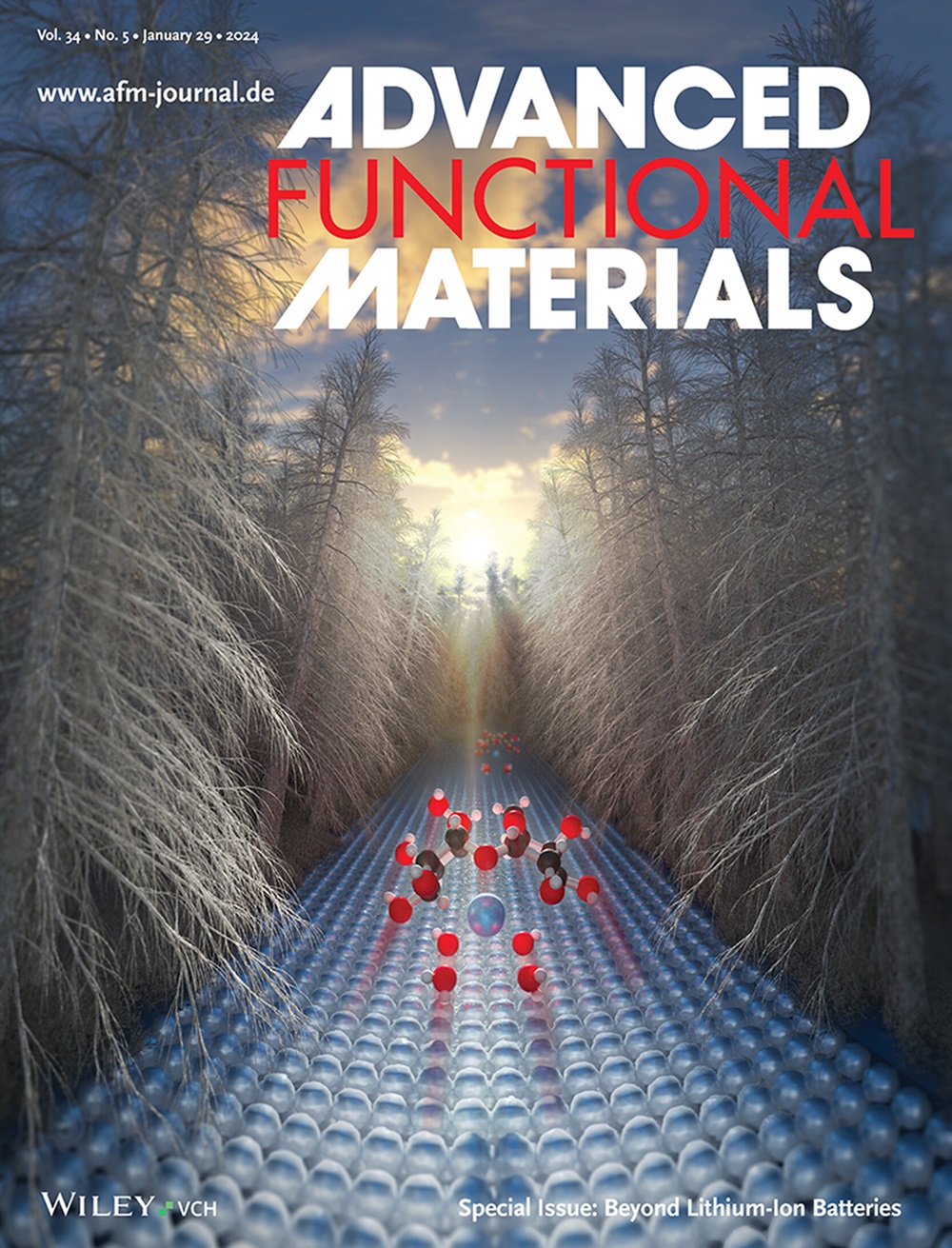Hybrid Metasurfaces Enabling Focused Tunable Amplified Photoluminescence Through Dual Bound States in the Continuum
IF 18.5
1区 材料科学
Q1 CHEMISTRY, MULTIDISCIPLINARY
引用次数: 0
Abstract
Miniaturized, tunable light sources are essential for integrated photonic devices in quantum computing, communications, and sensing. However, achieving tunable emission post-fabrication remains challenging, especially for efficient amplification. Hybrid metasurfaces that combine multiple nanostructured materials offer a promising solution, enabling enhanced control and amplification of light emission. Here, tunable amplified photoluminescence (PL) is demonstrated in nanocrystalline silicon (nc-Si) quantum dots (QDs) embedded in a hybrid metasurface of amorphous silicon (a-Si) and antimony trisulfide (Sb2S3), a low-loss phase change material (PCM). The nc-Si QDs exhibit stable, efficient PL at high temperatures, while the PCM enables tunable phase transitions. The metasurface supports dual quasi-bound states in the continuum (BICs), achieving Q-factors up to 225 and amplifying PL by a factor of 15 with a wavelength shift of 105 nm via dimensional modulation. Additionally, all-optical PL tunability across a 24 nm range is attained through PCM phase modulation. Furthermore, a high Q-factor metalens is proposed to focus the tunable amplified PL, extending the focused PL tunability into the near-infrared (NIR). This work advances reconfigurable nanophotonic devices for efficient quantum light sources in photonic systems.

通过连续体中的双束缚态实现聚焦可调谐放大光致发光的混合超表面
小型化、可调谐光源对于量子计算、通信和传感中的集成光子器件至关重要。然而,实现可调谐发射后制造仍然具有挑战性,特别是对于有效的放大。结合多种纳米结构材料的混合超表面提供了一个很有前途的解决方案,可以增强对光发射的控制和放大。在这里,可调谐的放大光致发光(PL)在纳米晶硅(nc-Si)量子点(QDs)嵌入非晶硅(a- si)和三硫化锑(Sb2S3),一种低损耗相变材料(PCM)的混合超表面中被证明。nc-Si量子点在高温下表现出稳定、高效的PL,而PCM可以实现可调的相变。该超表面支持连续介质(bic)中的双准束缚态,通过尺寸调制实现高达225的q因子,并将PL放大15倍,波长位移为105 nm。此外,通过PCM相位调制,可实现24 nm范围内的全光PL可调谐性。此外,提出了一种高q因子的超透镜来聚焦可调谐的放大PL,将聚焦后的PL可调谐扩展到近红外(NIR)。本工作为光子系统中高效量子光源的可重构纳米光子器件提供了新的研究方向。
本文章由计算机程序翻译,如有差异,请以英文原文为准。
求助全文
约1分钟内获得全文
求助全文
来源期刊

Advanced Functional Materials
工程技术-材料科学:综合
CiteScore
29.50
自引率
4.20%
发文量
2086
审稿时长
2.1 months
期刊介绍:
Firmly established as a top-tier materials science journal, Advanced Functional Materials reports breakthrough research in all aspects of materials science, including nanotechnology, chemistry, physics, and biology every week.
Advanced Functional Materials is known for its rapid and fair peer review, quality content, and high impact, making it the first choice of the international materials science community.
 求助内容:
求助内容: 应助结果提醒方式:
应助结果提醒方式:


